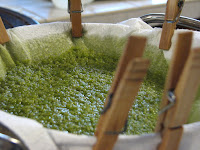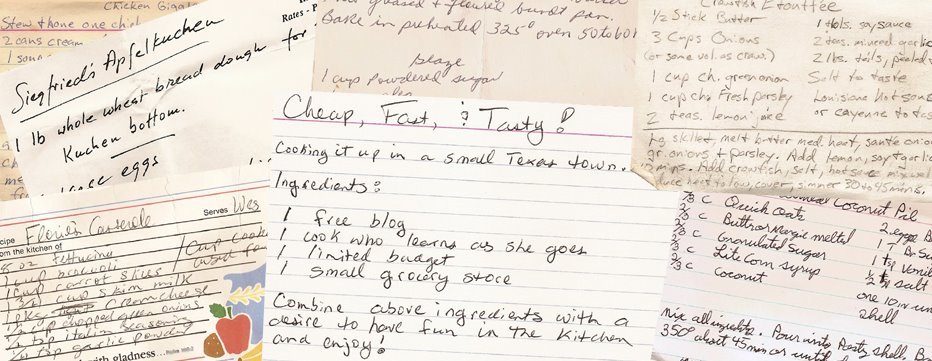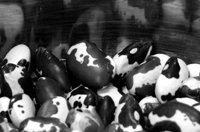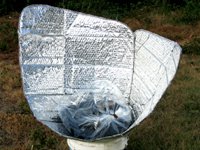While it's not fast, it's extremely tasty and doing all this work in one afternoon will provide you months of cheap, fast, and tasty goodness. It's also a great way to utilize an abundance of peppers.
I learned to make fire oil last year when my husband and his mother grew so many peppers that I was ready to rip my own eyes out. They were so proud of their peppers. And my mother in law, although we were growing our own, kept "gifting" us with bag after bag of peppers. They were growing Kung Pao, Jalapeño, Caribbean Red, and Scotch Bonnets. Pickled jalapeño peppers are CHEAP and so I had no interest in pickling my own. I dried a lot of these peppers and use them when I make beans or stir fry--but I wanted another way to preserve them. Hubby reminded me of the hot oil served in Asian restaurants and I began Googling this. After much research, this is how I make fire oil. You can do this with any type of peppers and you can use dried or fresh peppers when making it.
Instructions:
1. Rinse peppers to be used in your fire oil and dry them completely before proceeding.
2. Remove stems from peppers. Put peppers and a teaspoon of salt in blender (don't fill blender more than 3/4's full of peppers), and add peanut oil until peppers are covered. Puree on high until you have created what looks like a pepper smoothie. You can use a lighter, but high quality, oil if you prefer but I use the peanut oil to ensure I don't burn the mixture and so that if I'm cooking with the oil later on, I don't have to worry about burning it. Peanut oil has a high smoke point.
3. Pour mixture into a pot that has a properly fitting lid (a pot with a glass lid that you can see through would be ideal). Place lid on pot and turn heat on high. Then don't move or go anywhere until you can either hear the mixture boiling or until the lid starts to dance a bit from the boiling mixture. Lower heat to allow mixture to simmer and set timer for seven minutes. It's important that you are very careful boiling fire oil as you do NOT want this very dangerous mixture splattering on your skin. Yes, I have a photo here of the mixture boiling--I took my safety in my hands to do this. I don't recommend you try it.
4. When timer has gone off set pot aside and forget about it until it has cooled enough to work with.
5. It's time to strain your fire oil. Last year I used a chinois (metal,  cone-shaped strainer) and while it was nice, it didn't filter out enough of the pulp and all my fire oil bottles ended up with pulp at the bottom. This pulp does no harm, but when you gift someone with fire oil they tend to be dubious when they see that stuff floating on the bottom of the bottle. This year I decided to filter the fire oil the way my Mom taught me to filter peanut oil (since you can re-use peanut oil several times before it's bad).
cone-shaped strainer) and while it was nice, it didn't filter out enough of the pulp and all my fire oil bottles ended up with pulp at the bottom. This pulp does no harm, but when you gift someone with fire oil they tend to be dubious when they see that stuff floating on the bottom of the bottle. This year I decided to filter the fire oil the way my Mom taught me to filter peanut oil (since you can re-use peanut oil several times before it's bad).
With this method, you use one to two layers of paper towel (depending on the quality of the paper towel--never super cheap paper towel, please) which you clip to the top of a pot with clothes pins. The paper towel should not be pinned in such a way that the paper towel looks like a drum head on top of your pot. It should be concave in shape--clipped well but in such a way that when you pour your oil in, there is room for it to sit as it drains. Only pour as much oil in at a time as the paper towel can hold. Give it plenty of time to drain before adding more oil. Depending on how much pulp you have and how good your paper towel is, you may or may not have to refresh the paper towel you are using. You'll have to judge this yourself. If you have made a lot of fire oil, why not go ahead and set up several pots with paper towel so you can strain it all at once? It will mean more washing, but hey, at least you won't have to baby the one strainer for endless hours. I liked this straining method very much except that the pulp holds on to SO MUCH OIL and I have yet to figure out how to keep from wasting that--perhaps loading it into some linen cloth and squeezing it out? I am open to suggestions.
Or maybe I simply need to rethink the process of making fire oil--it may be that my best bet is to dehydrate all the peppers and add them to the oil then let it sit and infuse the oil with flavor. I may try that next year and see how the flavor compares.
6. Once the oil has drained you can pour it into a jar or bottle and it's ready to use. There is no need to refrigerate.
Link to a more printer-friendly version of this recipe.








How to use fire oil: Drizzle on any dish that you want to "heat up." Drizzle on pizza before you bake it to add delicious flavor or add it to hot pizza. Splash on your tacos, eggs, beans, or any food at all that you like. You can saute in fire oil but if you do, make sure you have good ventilation. Cooking in fire oil creates some spicy fumes!
Jalapeño fire oil will fade--the color will go from a vibrant, neon green to a kind of murky green, to an almost clear (but not attractive) green. This is normal and does not mean it has gone bad. So far, our Scotch Bonnet and Carribbean Red fire oils have not changed color very much. The Scotch Bonnet has stayed a gorgeous pineapple yellow color, the Caribbean Red went from a rich, thick red to a slightly clearer red, but it's still pretty. Our Kung Pao oil turned a bit murky, but it started out that way. It was never a pretty oil but it's our favorite fire oil for stir-fry and other Asian/Asian-style cooking. If hubby had had the patience to let the Kung Pao peppers turn red before harvesting them, I think they'd have made a really pretty oil.
Cranberry Magic Bars
2 weeks ago
















No comments:
Post a Comment